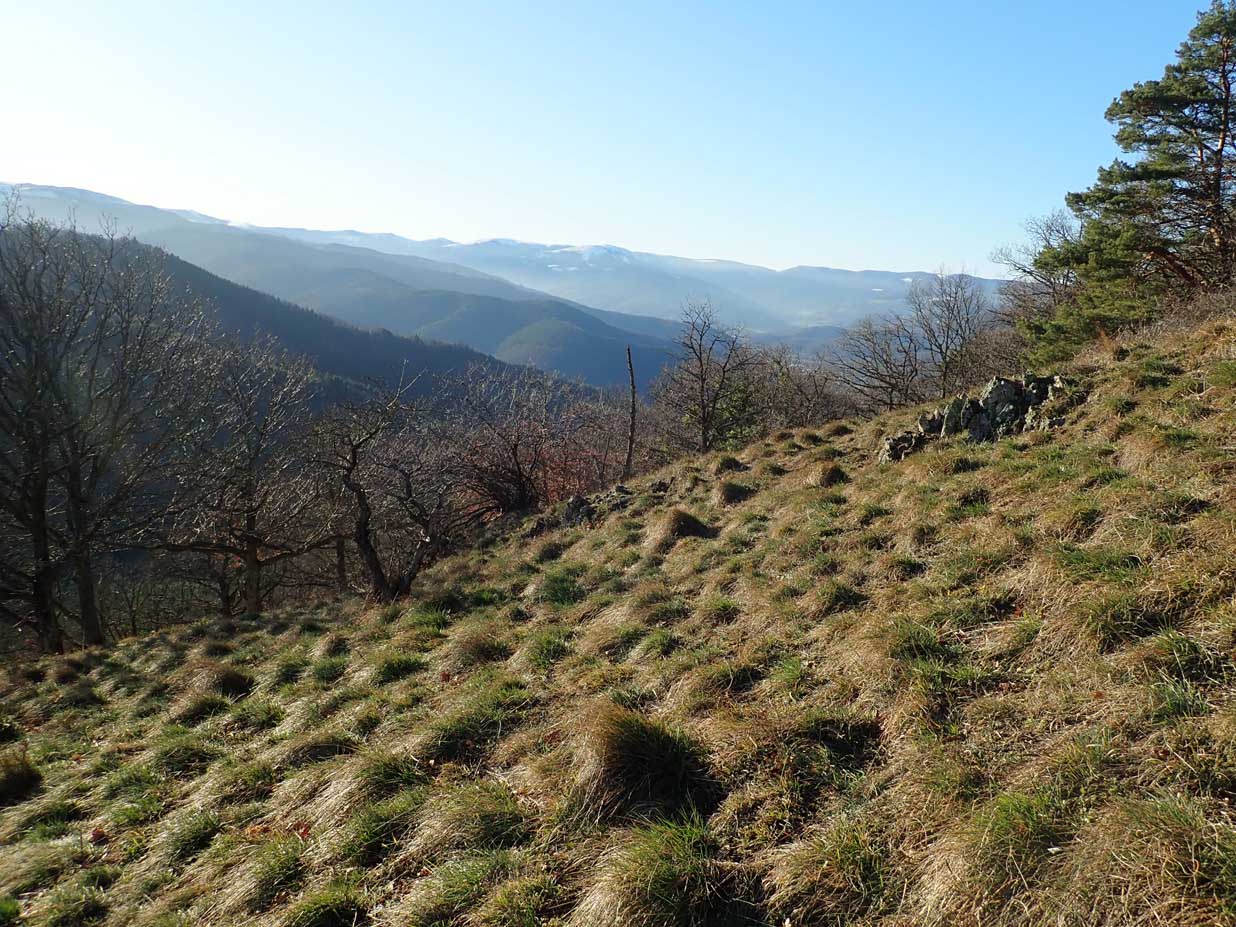Le Staufen, une pelouse sèche d’altitude à haut intérêt patrimonial
 Résumé ̶ Avec 900 mètres d’altitude, le sommet du Staufen possède une belle originalité grâce à sa position de sommet majeur le plus éloigné de la crête vosgienne. Un veilleur, en quelque sorte, de l’entrée de la vallée de Munster. Chargé d’histoire, le massif du Staufen se situe à la convergence de multiples bancs communaux, Wihr-au-Val, Soultzbach, Wintzenheim, Voeglingshofen ainsi que de châteaux tels que le Schrankenfels, le Haneck et le Guigesbourg. La particularité floristique singulière de sa pelouse d’altitude reste un atout "nature" remarquable de l’entrée de la Vallée de Munster située à 900 mètres d’altitude. Sa biodiversité regroupe une flore d’origine multiple, témoin de la colonisation végétale de notre région depuis 8 000 années environ. Par ailleurs, le massif du Staufen héberge une des rares stations de nidification de la gélinotte des bois ainsi que de chat sauvage maintes fois signalé dans le passé. Le Krebsbach au pied du Staufen possédait il y a un siècle une station d’écrevisses d’eau douce dont il ne reste que le nom !
Résumé ̶ Avec 900 mètres d’altitude, le sommet du Staufen possède une belle originalité grâce à sa position de sommet majeur le plus éloigné de la crête vosgienne. Un veilleur, en quelque sorte, de l’entrée de la vallée de Munster. Chargé d’histoire, le massif du Staufen se situe à la convergence de multiples bancs communaux, Wihr-au-Val, Soultzbach, Wintzenheim, Voeglingshofen ainsi que de châteaux tels que le Schrankenfels, le Haneck et le Guigesbourg. La particularité floristique singulière de sa pelouse d’altitude reste un atout "nature" remarquable de l’entrée de la Vallée de Munster située à 900 mètres d’altitude. Sa biodiversité regroupe une flore d’origine multiple, témoin de la colonisation végétale de notre région depuis 8 000 années environ. Par ailleurs, le massif du Staufen héberge une des rares stations de nidification de la gélinotte des bois ainsi que de chat sauvage maintes fois signalé dans le passé. Le Krebsbach au pied du Staufen possédait il y a un siècle une station d’écrevisses d’eau douce dont il ne reste que le nom !
Mots-clés ̶ chênaie sessile, flore xéro-thermique.
Abstract ̶ The Staufen, a high altitude dry grassland of great natural heritage interest
At an altitude of 900 meters, the summit of Staufen presents a beautiful originality as the furthest high peak from the Vosges ridge, a kind of watchtower at the entrance of the valley of Munster. Rich in history, the Staufen massif is located at the convergence of multiple communal territories, Wihr-au Val, Soultzbach, Wintzenheim and Voeglingshofen and castles such as the Schrankenfels or the Haneck and the Guigersbourg. The singular floristic particularity of its high altitude grassland remains a remarkable "nature" asset of the entrance of the Valley of Munster located at 900 meters of altitude. Its biodiversity includes a flora of diverse origins, testimony to the plant colonization of our region for about 8,000 years. Moreover, the Staufen houses one of the rare nesting and breeding sites of the wood grouse as well as of the wild cat, which has been reported many times in the past. The Krebsbach, at the foot of the Staufen, was the location of a freshwater crayfish station a century ago, of which only the name remains!
Keywords ̶ sessile oak forest, xerothermic flora.
